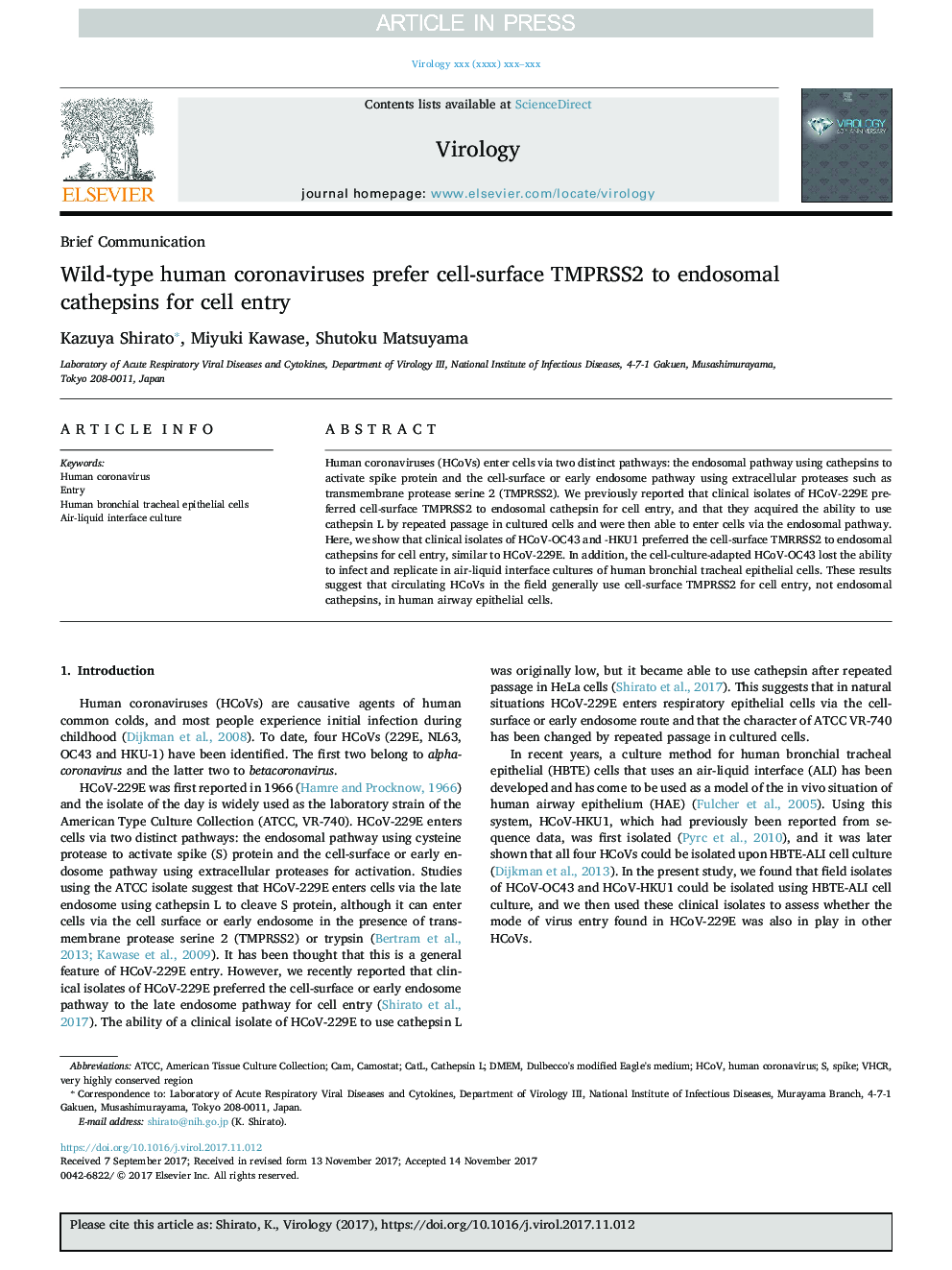| Article ID | Journal | Published Year | Pages | File Type |
|---|---|---|---|---|
| 8751491 | Virology | 2018 | 7 Pages |
Abstract
Human coronaviruses (HCoVs) enter cells via two distinct pathways: the endosomal pathway using cathepsins to activate spike protein and the cell-surface or early endosome pathway using extracellular proteases such as transmembrane protease serine 2 (TMPRSS2). We previously reported that clinical isolates of HCoV-229E preferred cell-surface TMPRSS2 to endosomal cathepsin for cell entry, and that they acquired the ability to use cathepsin L by repeated passage in cultured cells and were then able to enter cells via the endosomal pathway. Here, we show that clinical isolates of HCoV-OC43 and -HKU1 preferred the cell-surface TMRRSS2 to endosomal cathepsins for cell entry, similar to HCoV-229E. In addition, the cell-culture-adapted HCoV-OC43 lost the ability to infect and replicate in air-liquid interface cultures of human bronchial tracheal epithelial cells. These results suggest that circulating HCoVs in the field generally use cell-surface TMPRSS2 for cell entry, not endosomal cathepsins, in human airway epithelial cells.
Keywords
Related Topics
Life Sciences
Immunology and Microbiology
Virology
Authors
Kazuya Shirato, Miyuki Kawase, Shutoku Matsuyama,
